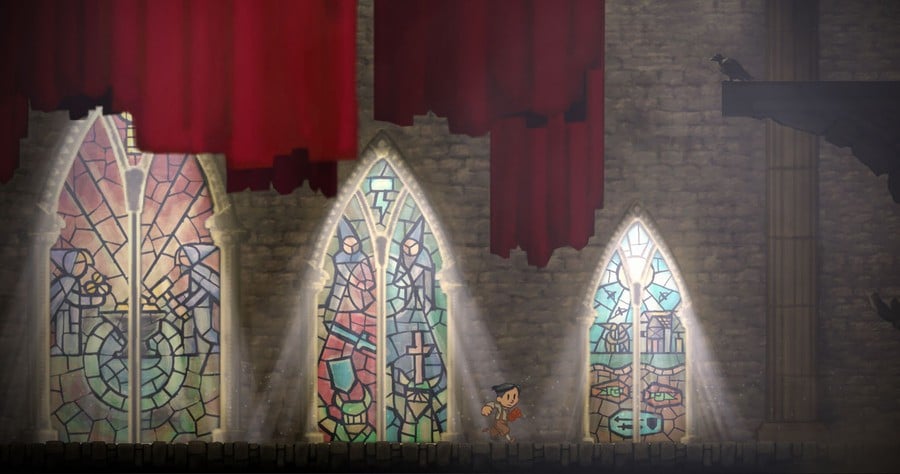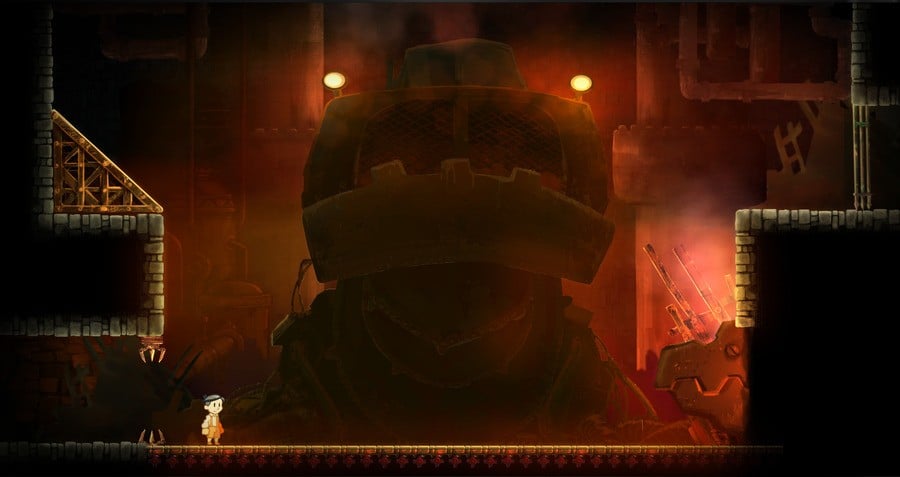
The Wii U eShop may have had what we could describe as a "steady" start, but in the remainder of 2013 and into 2014 there are a number of encouraging projects on the way. It's perhaps a product of Nintendo's efforts to spread the word and court smaller developers, as well as the Unity tools and assistance on offer, and it may in part simply be a result of a maturing platform that's gradually winning over the development community. Whatever the case, the Eurogamer Expo has not only had a dedicated Nintendo eShop Indie section, including upcoming 3DS eShop releases in addition to Wii U brethren, but games on show elsewhere in PC areas that are also destined for the big N's system.
One of these titles is Teslagrad, which was one of a number of surprise reveals in a Nintendo Direct sizzle reel of upcoming Wii U eShop titles earlier in the year. As explained in an interview to be published later in the week here on Nintendo Life, it's clear that Nintendo initiated the move of the title to its platform, and that the free Unity toolset that's available has been an invaluable tool to the developer.
With a lot of eShop titles due in late 2013 and early 2014, it is of course important to identify the quality of experiences on the way. As can perhaps be argued based on the relatively low output of the eShop so far, the standard and overall level of technical achievement in current download-only games is a continual progression, with visuals and design often weighing up favourably with big-budget efforts. From our time with the current Teslagrad build, it seems to be part of that positive trend, exuding quality with every cleverly structured mechanic.
Conceptually, it's clear that developer Rain Games is forming an organic experience, with the goal of educating the player with well structured puzzles and sections that are self teaching, without any "tap A you dummy" prompts. It's a trend we're pleased to see, and in the space of 15-20 minutes we learnt to climb walls, manipulate magnets and electricity in a variety of ways and combine those skills with platforming, all through trial and error or by simply engaging our brains.

Things start simple, with the goal of exploring the immediate area by running, jumping and climbing. There's a pleasing balance to the main character, as he combines nimble agility with a solid presence that enables instinctive platforming. Early on you then pick up a glove, which introduces the first primary mechanic; using the left and right trigger buttons, you can activate red and blue magnetic forces to specific objects and platforms. By "charging" an object — often alternating between both magnetisms to prompt an action — you move blocks, platforms and even moving metallic creatures in order to make progress. In this sample the puzzles were never particularly difficult, with just the occasional moment that would give us a moment of pause.
The magnetic mechanic is, we were told by the developers, just one element, albeit one that'll be integral throughout the full game. We were also given a brief demonstration of a teleport ability that'll be earned with further progress, emphasizing a concurrent sense of evolution in both abilities and level design. Even in the small sample that we played we moved walls, levitated in upward magnetic fields, and at one point reversed polarities to propel a platform across an abyss.

Also featured was a boss stage, at which point we were advised to stick on the pair of available headphones. We were greeted by a sweeping orchestral piece, and the large mechanical monster rained down fire from above but, at key points, also propelled a magnetic field towards the moving floor on which we were running. Whereas the build-up had been a largely methodical puzzle experience, twitch reactions became important in the rush to magnetise blocks to coincide with the beam, dragging them upwards to damage the beast. Doing this while avoiding flame attacks and walls of fire at each end was a challenge, but ultimately one that was satisfying.
This was our only real combat, meanwhile, which in itself was really an action puzzle; you can apparently expect to solve puzzles and navigate environments to avoid conflict, for the most part, rather than fight enemies.
That burst of dramatic music was a highlight, but we'd certainly like to emphasize the terrific visuals on show so far. There's technical accomplishment utilising the Unity engine, of course, but it's the steampunk art-design that truly shines. In our interview it was made clear that the studio has a clear vision for this game world, and that clarity seems to have delivered a visually arresting title. This was a PC build, but we'd certainly be optimistic that the rusted metallic areas we saw, which are punctuated with occasional hints of real-world nature, will be replicated well on the Wii U. The animation had a lovely fluidity, too, which combined nicely with the solid mechanics and structure on show.
Teslagrad is looking like a positive future entry on the Wii U — the aim is for it to launch simultaneously across all confirmed platforms — which could potentially deliver a top-notch puzzle-platforming experience. Keep an eye out for our developer interview in the coming days, and we suggest that this should be on your radar.
Comments 19
Wow, looks impressive. Not usually impressed by indie mechanics but this looks pretty good.
I really love indie devs and their fresh ideas. These guys in particular have a weird art direction and I frekkin love it!!
From these impressions this sounds a little like Toki Tori 2, solving puzzles without hand holding.
Looks promising. I'll probably end up buying it.
Looks interesting...
I'll keep my eye on it. Looking forward to that interview this week for more info.
I want this and wood sensei and almost pretty much every Indie game coming to wiiu.
I love games like this :3
annoying audio
This looks good.. really good..
Look very interesting and a lil dark really. I may pick this up with it is released!
I really love the art style, the music, and what has been shown of the gameplay mechanics. I want a release date, though! I am so impatient! There are so many good indie games coming out soon!
You can download and play the PC/Mac demo from http://www.desura.com/games/teslagrad
I played the demo on my computer, it is worth it! I have been following this game for almost a year now and I got to play the demo a while back and playing it made me salivate in anticipation of this title's Wii U release! Try it out you won't be disappointed!
If you plan on downloading the demo and are confused on how to do it without joining Desura, if you aren't already a member. On the front page for Teslagrad, click the blue "install game" button and a popup box will appear, Underneath the Desura logo is some very small writing, it says "You need desura to install Teslagrad(direct download, or view keys)" click on the direct download link and you will be presented with many DL options, choose the correct one for your system, download and enjoy! Your welcome!
Looking pretty brilliant. Been waiting for info ever since that sizzle reel. Wonderful art style, for sure.
Art style looks great but think I might need a break from platfomers after nsmbwu, trine 2 and rayman legends back to back....plus I haven't started on Luigi u yet!!
Man, everything I've seen about this game looks so good. The mechanics look great and the visuals are gorgeous. I've been looking forward to it ever since I first heard about it.
Played the demo. The art looks really impressive and the puzzles are also intriguing. Though I'm probably sure that this game will end up being on pc as well seeing that its an indie game.
Looking pretty interesting !
love indie games!!
Show Comments
Leave A Comment
Hold on there, you need to login to post a comment...